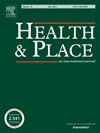Echoes of Inequity: Charting Colombia's stroke mortality shifts and socioeconomic and spatial disparities over two decades
IF 4.1
2区 医学
Q1 PUBLIC, ENVIRONMENTAL & OCCUPATIONAL HEALTH
引用次数: 0
Abstract
Background
Stroke remains a significant public health challenge globally and in Colombia, influenced by socioeconomic and demographic factors. Despite declining mortality rates, inequities persist. This study explores trends in stroke mortality in Colombia (1999–2017), focusing on inequalities by age, sex, and educational attainment.
Method
A descriptive longitudinal retrospective study was conducted using mortality data from the National Administrative Department of Statistics. Standardized Mortality Rates (SMRs) were calculated, adjusting for age and sex. Poisson regression models and the Relative Index of Inequality (RII) assessed inequalities. Geographic analyses examined spatial mortality patterns using Geographic Information Systems.
Results
Between 1999 and 2017, 262,350 stroke deaths occurred, predominantly in older adults and individuals with lower educational attainment. Stroke mortality declined over time but remained higher among men (66.01/100,000) compared to women (65.74/100,000). Mortality rates were highest in individuals with primary education and lowest in those with tertiary education. Geographic analysis revealed higher mortality in more economically developed regions, suggesting potential underreporting in less developed areas. The RII highlighted pronounced inequalities, especially among women and younger age groups.
Conclusions
While stroke mortality in Colombia has decreased, marked inequities persist, particularly by educational level and geographic region. Addressing these inequalities requires targeted public health policies to enhance healthcare access and promote equity.
不平等的回声:绘制哥伦比亚中风死亡率变化以及20年来的社会经济和空间差异
中风仍然是全球和哥伦比亚面临的一项重大公共卫生挑战,受社会经济和人口因素的影响。尽管死亡率在下降,但不平等现象依然存在。本研究探讨了哥伦比亚中风死亡率的趋势(1999-2017),重点关注年龄、性别和受教育程度的不平等。方法采用国家统计行政部门的死亡率资料进行描述性纵向回顾性研究。计算标准化死亡率(SMRs),并根据年龄和性别进行调整。泊松回归模型和相对不平等指数(RII)评估了不平等。地理分析使用地理信息系统检查空间死亡率模式。结果1999年至2017年期间,发生了262350例中风死亡,主要是老年人和受教育程度较低的个体。随着时间的推移,中风死亡率有所下降,但男性中风死亡率(66.01/10万)高于女性中风死亡率(65.74/10万)。受过初等教育的人死亡率最高,受过高等教育的人死亡率最低。地理分析显示,经济较发达地区的死亡率较高,这表明欠发达地区可能存在漏报现象。RII强调了明显的不平等,尤其是在女性和年轻群体中。结论:虽然哥伦比亚的中风死亡率有所下降,但明显的不平等仍然存在,特别是在教育水平和地理区域之间。解决这些不平等问题需要有针对性的公共卫生政策,以增加获得医疗保健的机会并促进公平。
本文章由计算机程序翻译,如有差异,请以英文原文为准。
求助全文
约1分钟内获得全文
求助全文
来源期刊

Health & Place
PUBLIC, ENVIRONMENTAL & OCCUPATIONAL HEALTH-
CiteScore
7.70
自引率
6.20%
发文量
176
审稿时长
29 days
期刊介绍:
he journal is an interdisciplinary journal dedicated to the study of all aspects of health and health care in which place or location matters.
 求助内容:
求助内容: 应助结果提醒方式:
应助结果提醒方式:


